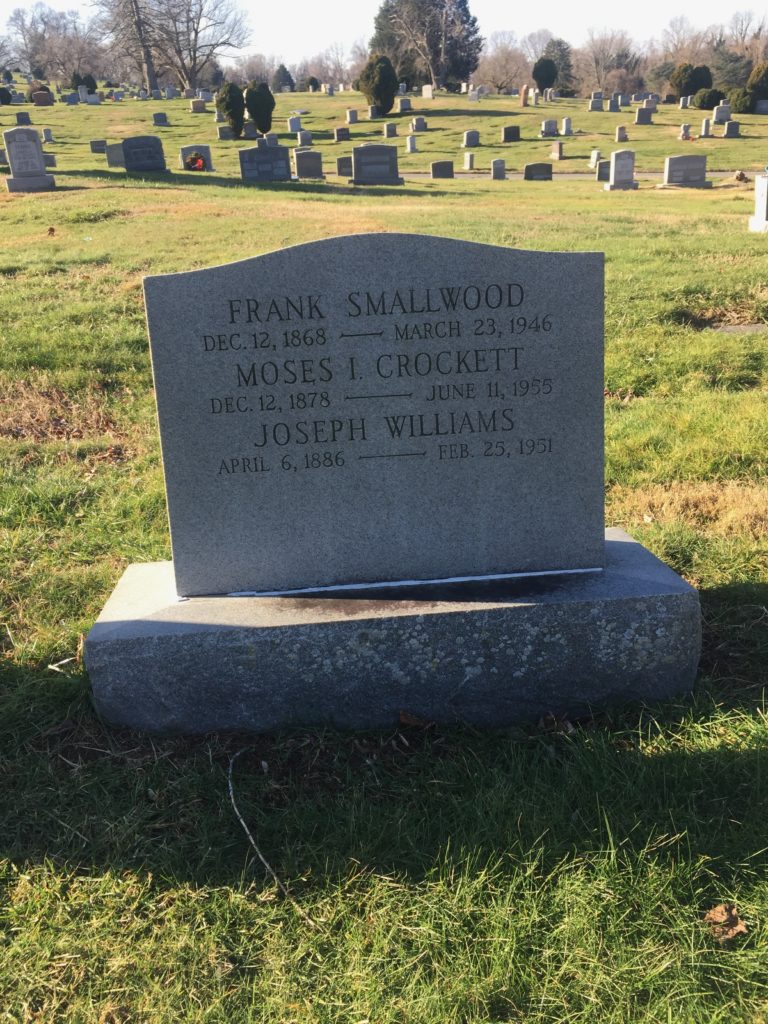Erik Visits an American Grave, Part 1,065
This is the grave of Smokey Joe Williams.

Born in 1886 in Seguin, Texas, Williams was half Black and half Comanche. Such relationships were quite common in this era. Williams grew up in the poverty of the post-Reconstruction South. He was an excellent athlete and like most athletes in this era, baseball was his game of choice. He started playing professionally 1905 with the San Antonio Black Bronchos. This was not a real dominant team and didn’t pay that well. But Williams was a complete power, immediately seeing massive success, with a 28-4 record as a rookie and then a 32-8 record in 1909. So after that, the Chicago Giants bought his contract for a year and then he went to the Lincoln Giants, which played in New York.
Williams would play the next twelve years for the Giants, from 1911-23. Now, these seasons were inconsistent, so it wasn’t uncommon for Williams to spend time with other teams too, either to make money for because the team owner rented him out. That included stints with teams in Schenectady and Atlantic City. At the end of 1914, Williams also became manager of the Giants and stayed in that role through the 1923 season as well. In 1919, he threw his only no-hitter.
In 1924, Williams left the Giants for the Brooklyn Royal Giants and then in 1925 went to the legendary Homestead Grays. He must have had an arm made of steel because he was old and still throwing an awful lot of innings. He played in Homestead through the 1932 season. In 1929, at the age of 43, he still won 12 games. For that matter, in 1930, now age 44, he faced off with the Kansas City Monarchs in a game where Chet Brewer pitched. This became one of the all-time legendary pitching matchups. It was a 12 inning game and the Grays won 1-0 after Williams struck out 27 batters and Brewer a mere 19. It was by this time that he became known as Smokey Joe. He was known as Cyclone Joe in his New York days. Maybe Smokey Joe became a thing because no one could see his pitches due to all the smog from the steel plants in the Pittsburgh area. Doubt that is the case but I feel like speculating.
Of course Williams played in the many barnstorming tours that paid the bills for Negro League players. Many of those included exhibition games against white teams. One thing about this–given how often the races did play each other in these games and the respect that at least some leading white players had for their Negro League counterparts, it feels a bit surprising to me that there wasn’t at least some push for integration earlier than 1947. I know all the context and I know why and all of that. It’s a rhetorical question. But they were already playing each other all the time! Ah, race in America. Anyway, Williams got to pitch against all the great white batters of the day as well and match on the mound the leading pitchers of the day, from Grover Cleveland Alexander to Walter Johnson. I mean, even Ty Cobb, as racist as he was, said Williams would win 30 games a year if he played in the Major Leagues.
Williams’ last real game in the Negro Leagues was in 1932 when he was briefly with the Detroit Wolves after the Grays finished their season. With the decline in the Negro Leagues and the integration of Black players into baseball, the greats of the Negro Leagues were pretty forgotten outside of Satchel Paige and a few others. In fact, it took the work of Bill James and others investigating baseball history to remember just how great these people were. That’s why Williams, even though he was at worst the second best pitcher ever in the Negro Leagues behind Satchel Paige (and many considered him better at the time) had to wait until 1999 to get into the Baseball Hall of Fame.
To say the least, Williams did not live to see his induction, as many Negro Leaguers did not. He died in 1951, at the age of 64.
Smokey Joe Williams is buried in Lincoln Memorial Cemetery, Suitland, Maryland.
Also, welcome to full fledged Opening Day! Didn’t think it would happen this year.
If you would like this series to visit other players from the Negro Leagues in the Hall of Fame, you can donate to cover the required expenses here. Turkey Sternes, selected to the HOF in 2000, is in Clinton Township, Michigan and Ray Brown, selected in 2006, is in Dayton, Ohio. Previous posts in this series are archived here.


